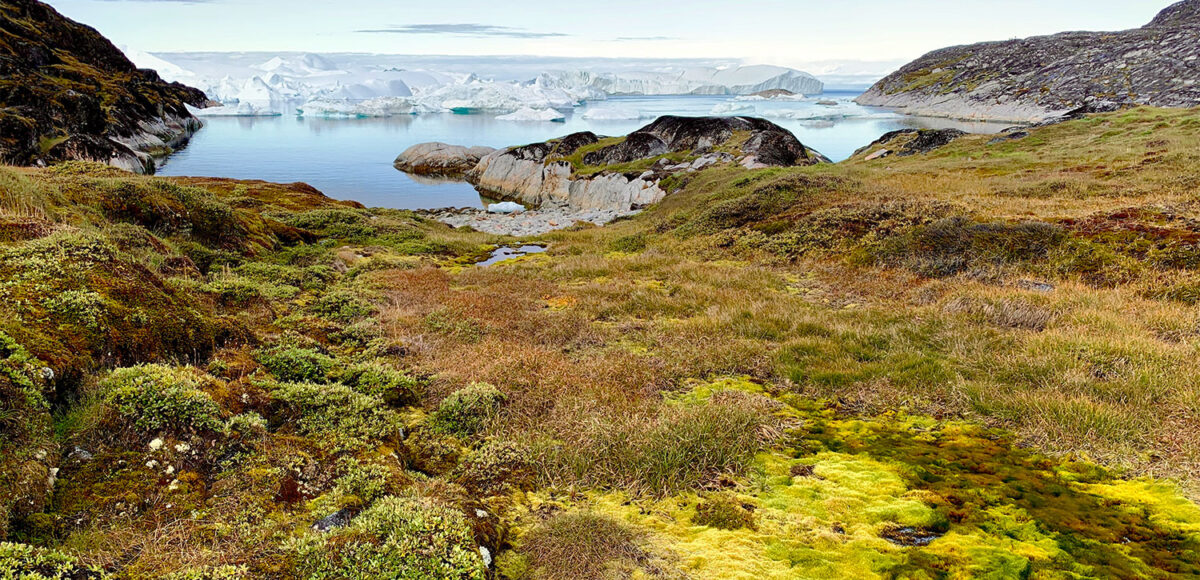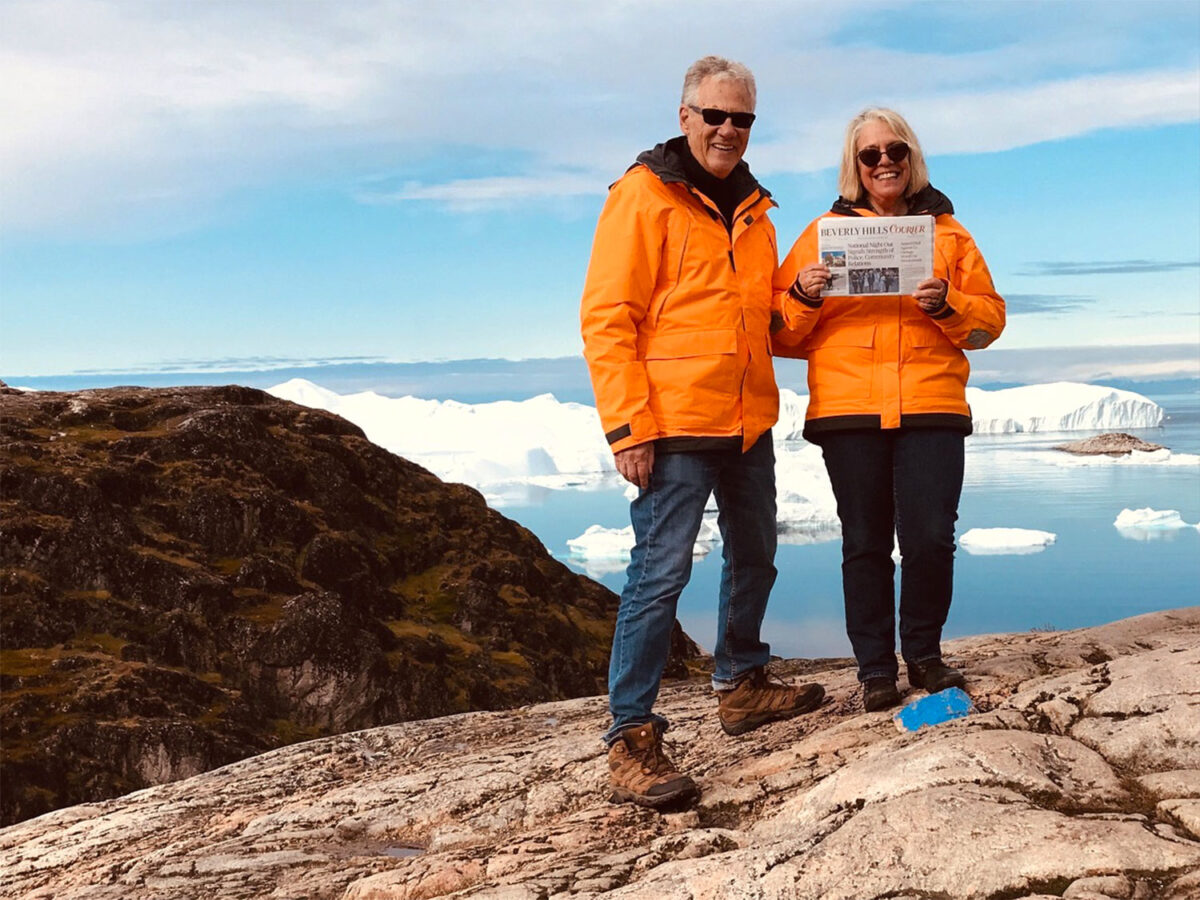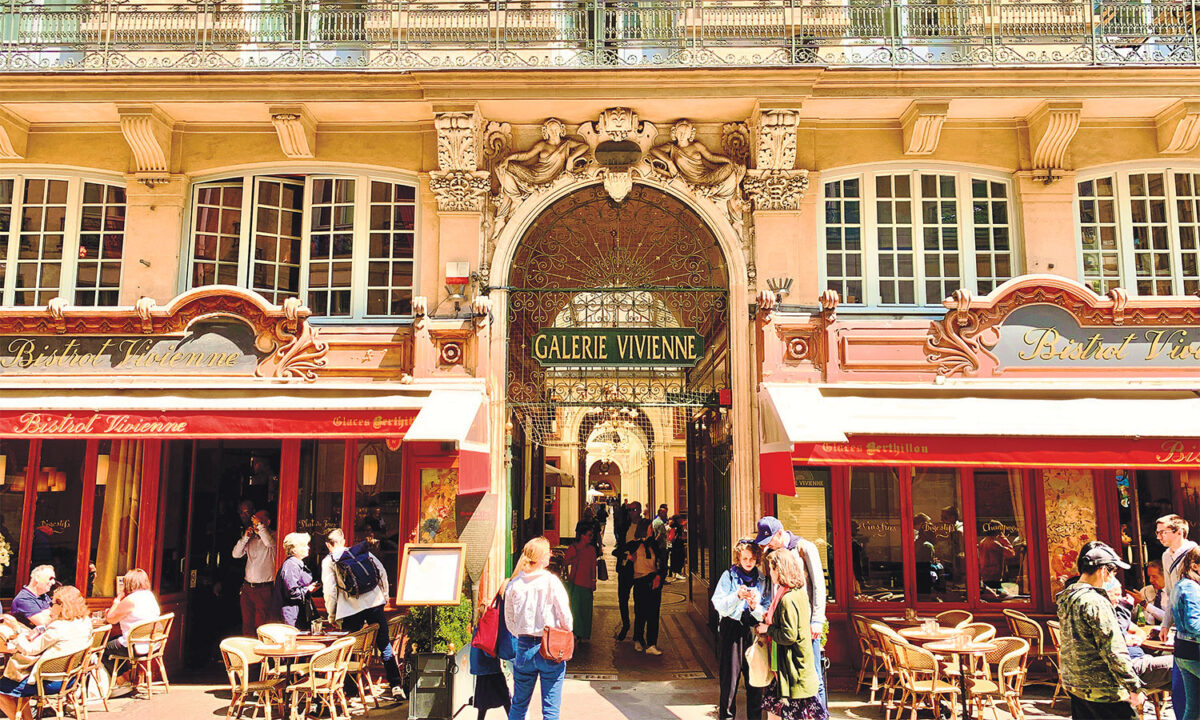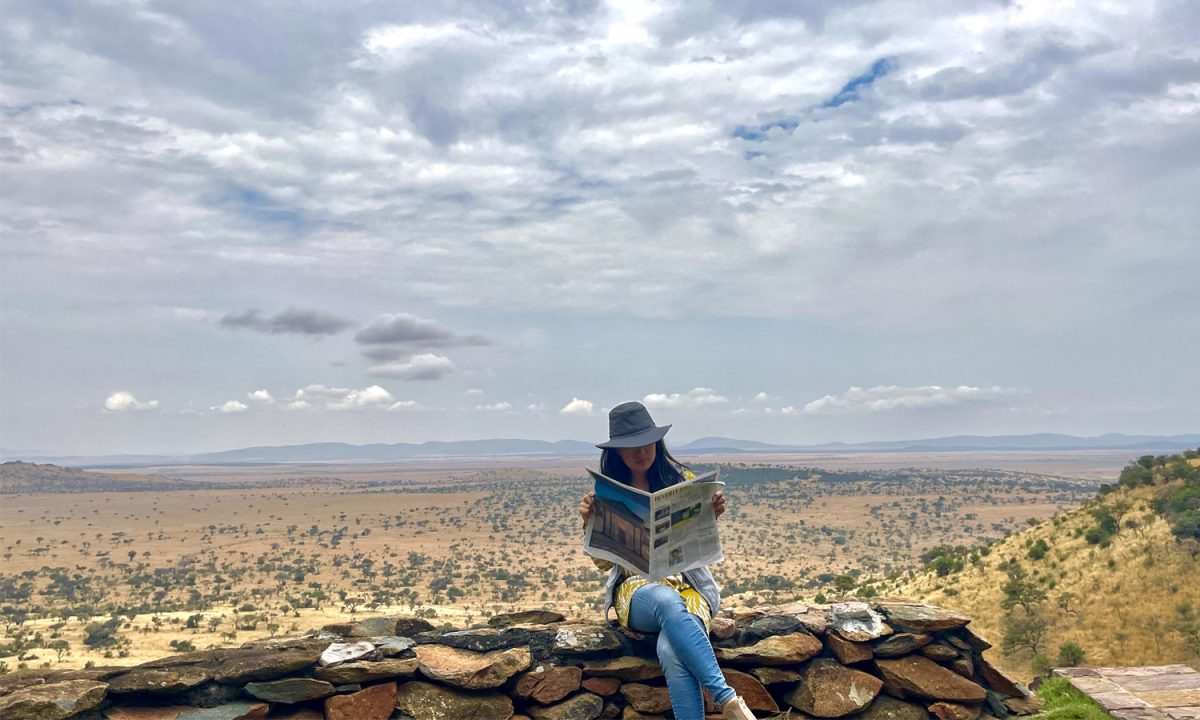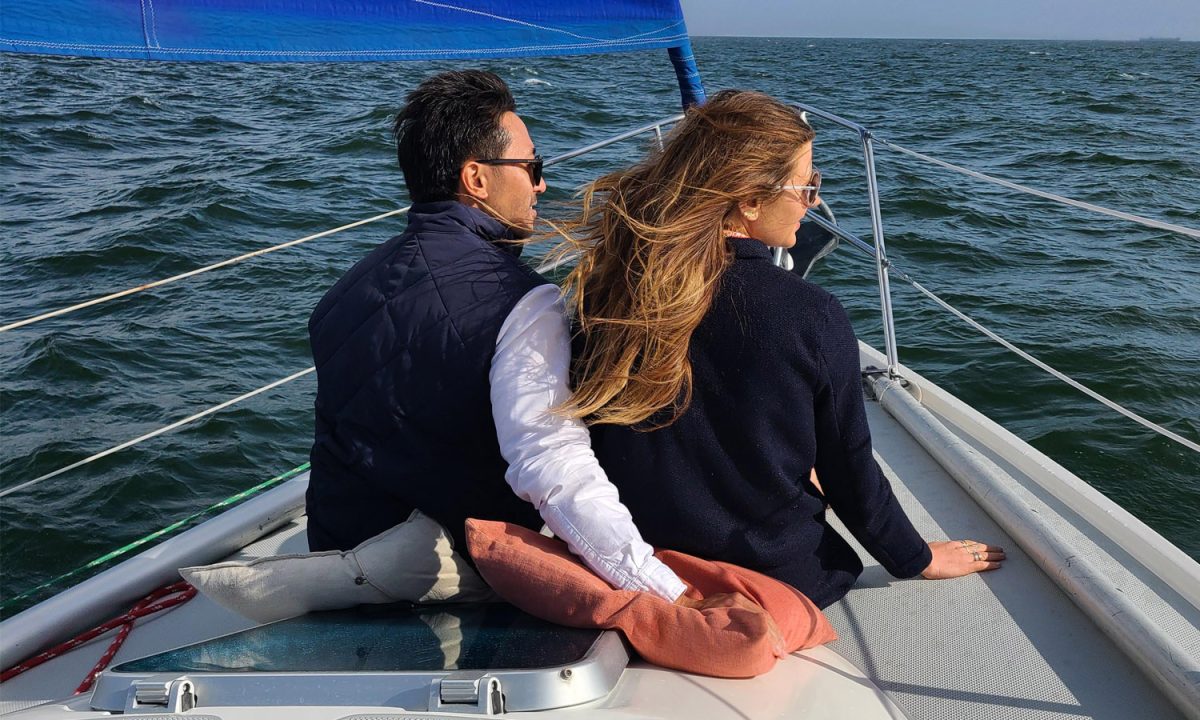We do not consider ourselves adventure travelers. Give me a stroll down the Boulevard Saint Michel and I’m a happy camper. But a trip to Antarctica several years ago whetted our appetites for more challenging exploration and when we learned about the Northwest Passage, we were determined to go, finally able to schedule it for 2023. Because of ice conditions, the optimal sailing season is about 12 weeks, from July through September.
The Northwest Passage has an allure that has captivated travelers and explorers for hundreds of years. Captain Cook approached the Passage from the west in 1776, making one wrong turn after another and never quite got past what we now know as the Bering Strait. Recognizing the value of a shorter passage across North America, the British continued to fund expeditions, the most famous of which was in 1845, led by Sir John Franklin, a marginally qualified, under-funded and poorly prepared naval officer. Full speed ahead in two ill-suited ships, he made it farther than most before disappearing. His ships became mired in ice and eventually all crew died of a combination of scurvy, starvation, exposure and, as it turns out, lead poisoning from their canned goods. After his disappearance, rewards offered by the government and the tabloid press attracted a massive search. Although most of the buccaneers who followed in pursuit died, the end result was a more complete map of the Northwest Passage waterways. It wasn’t until many years later, in 1906, that Norwegian explorer Roald Amundsen triumphed in traversing the passage. Amundsen, with a small ship and a crew of six, often having to winter over when his ship became ice-bound, interacted with the native Inuit, something the Brits refused to do. From them he learned how to survive the winters and how dogs could be used to traverse the ice (a technique he would use successfully in becoming the first to land at the South Pole). Cruising the Northwest Passage in luxury is a very recent phenomenon.
Our trip began in Reykjavik, Iceland, a truly charming and interesting location offering tectonic plates, massive fjords and glaciers, geysers and beautiful waterfalls. From there, we were flown to Kangerlussuaq, Greenland to board our ship, the Seabourn Venture. Kangerlussuaq, a desolate spot on the sea where the remains of the World War Two air force base are still visible, did, however, give us an introduction to the kinds of glaciers we would see throughout the cruise. So much of this very brown landscape was created by the silt deposited by the glaciers pulled by gravity inexorably to the sea.
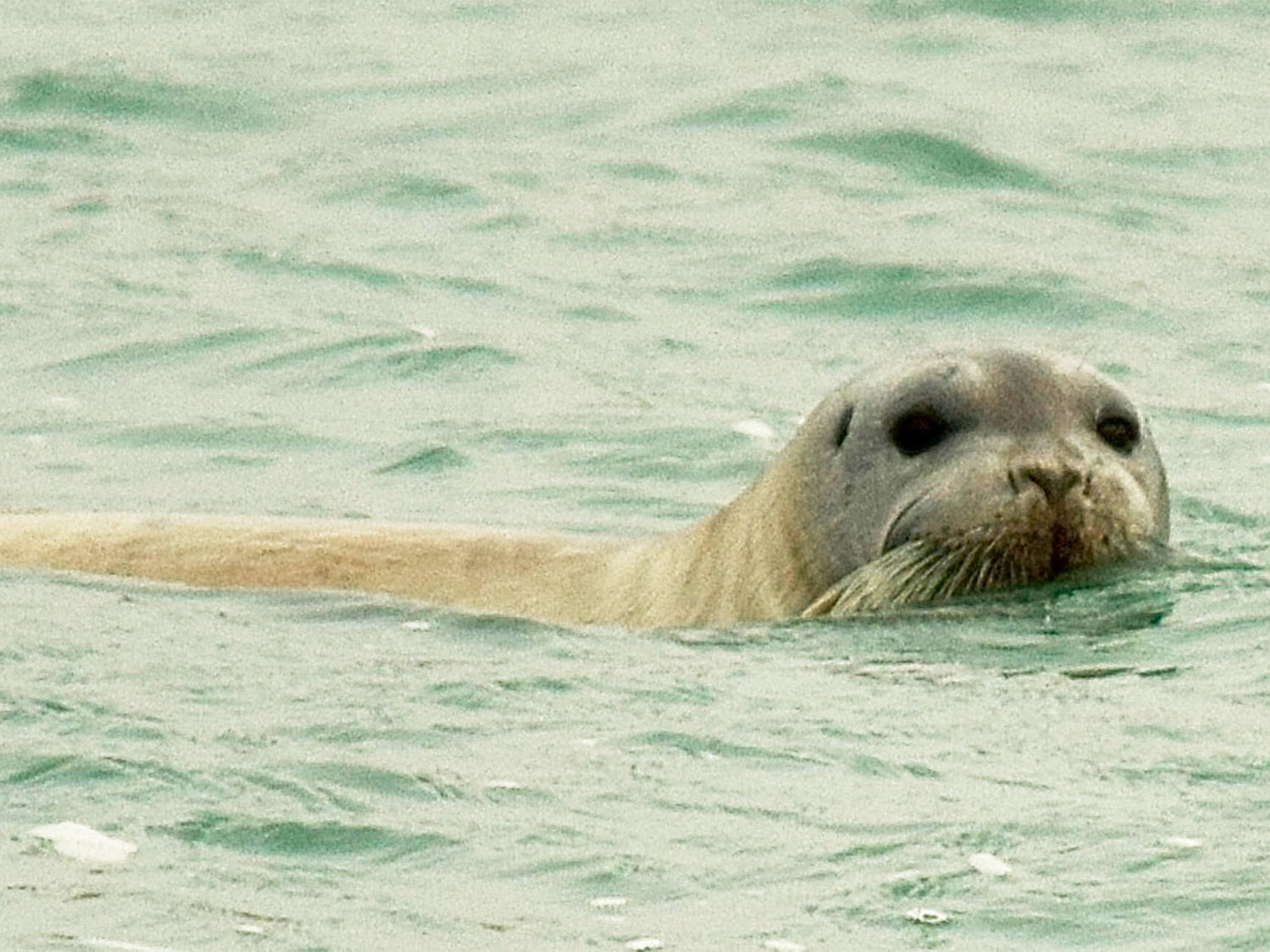
Our first port stop was in Sisimiut, 24 miles north of the Arctic Circle. That it is the second largest city, 5,600, gives you an idea of the sparse population spread out over 836,300 square miles, 80% of which is ice. We toured the village with its colorful buildings, each color signifying a specific purpose: Blue – fishing; Grey – community government; Yellow – schools; and Red – historic preservation. It rained incessantly and foolishly forgoing our “wet” wear, the protective overpants worn for landings, we returned soaked to the gills. Luckily each stateroom had a “warming” closet equipped with a high powered towel warmer where we could hang our clothes and set our shoes out to dry.
Our next stop, and in retrospect my favorite, was Ilulissat, located on a fjord. It has been populated for 4,000 years, but the story of the Inuit migration from Siberia over millennia is another story entirely. It is not coincidental that Ilulissat in Greenlandic means iceberg because it is home to the Jakobshavn Glacier that produces 10% of all the Greenlandic icebergs. Learning from our previous mistake, this time we layered up properly, beginning with a pair of woolen socks followed by long underwear, over which I added a pair of ponte pants and another pair of socks. Then came the base layer T under a turtleneck nylon shirt topped with a cotton T; nylon rain pants were pulled on over the bottom layers which would then be pulled over rubber boots. Finally the bright orange winter parka, lined with another jacket, a wool beanie and warm gloves finished the look.
One enters Ilulissat through the mandible of a whale, much like a bower greeting the many passengers that stop there. The smell of fish permeates the air where halibut and turbot are the big exports. Walking south to the Ice Fjord Center, Dore Mandrup’s gorgeous undulating building nestled into the hillside, we climbed up the roof for our first view of the fjord’s icebergs. A long wooden boardwalk leads most of the way down to the Kangia icefjord through yellow tundra speckled with tiny red flowers. A mud and rock path leads the rest of the way. The sheer expanse of the icebergs, riddled with fissures and literally sculpted into unearthly shapes, is breathtaking. Later that afternoon we returned for a boat tour. Zipping around the icebergs, the captain asked if we’d like to see whales. There’s only one answer to that question and we began to follow the gulls that flew overhead, a sure sign of the presence of whales who are a harbinger of fish. We soon found ourselves in the midst of an area brimming with humpbacks playing, flapping their white flippers, and waving their tails as they pec slapped mere feet from the tiny trawler.
The Karrat Fjord was our final Greenlandic excursion where we sailed between two glacier land masses that are over 150 million years old. Careening around the myriad-shaped icebergs in our zodiac (a 12 passenger rubberized motor boat), occasionally reaching down to touch or bring an iced tidbit aboard, something for which Martha Steward was vilified that very morning.
Crossing Baffin Bay to the Nunavut Territories and the Canadian Arctic Archipelago, we left Greenland, arriving in Pond Inlet, an Inuit village with no visible source of income. Although the waters are rich with Arctic char and cod, the fish are not exported globally like they are from other Nunavut villages. There is a modest industry of hunting and fishing tourism for the polar bears and caribou that populate the hills. This is a very isolated and private area where photography of residents is restricted and in some cases forbidden, something that is probably true of all Inuit cultures and villages. Our walk through town revealed a very barren landscape and neighborhoods of manufactured homes. Accompanied everywhere by a local villager, ostensibly to protect us from cars (of which there were very few), all roads led to the community center where a show was staged for us, narrated by a local woman who explained the significance of what we watched. Demonstrations included the “lip pull” (exactly what it implies) contest and the amazing “throat singing.”

On Philpots Island, we toured the icebergs and shore by zodiac as our guide, Peter, gave us a lesson in global warming as he explained that as the ice cap increasingly melts, the water level and temperature rises. That afternoon, climbing on land, we saw several walruses as we explored the tundra and rocky hills that yielded great views of the surrounding islands.
Croker Bay, a fjord on the south coast of Devon Island, was where we had our first polar bear sighting. Sighting may be a slight exaggeration since the bear was a tiny dot. Through the GSS (Gyro-Stabilized System), the ship’s super high powered camera capable of zooming in on distant objects, it looked like a giant white anteater with long legs, nose to the ground searching for food in the barren landscape. Looking forward to the zodiac ride that would follow the bear along his shoreline excursion, we had to keep a considerable distance between the zodiac and the land because these lumbering creatures are surprisingly agile, fast, graceful and capable of swimming swiftly for prey. And that’s what we were in our zodiac—the bottom half of an Eskimo Pie.
Next stop was Beechey Island, famous for its role in the Franklin expedition. It was here that the graves of several seamen from his ill-fated trip were buried, headstones marking the graves. Recent exhumation revealed a great deal about their lives, cut short, as suspected, by the aforementioned scurvy, starvation, lead poisoning and exposure. It’s difficult walking terrain with no growth, just rocks, shiny pebbles and some ancient coral reef riddled with lichen but worth it for the views of its yellow-gray buttes reminiscent of Arizona’s Monument Valley; sheer cliffs of rock slabs with pebble slides cutting through them. Beechey Island was also the scene of my greatest humiliation as I tried to lift my leg over a pebbled shelf and fell forward in slow motion. Immobile, dressed like Randy in “A Christmas Story,” only my pride was hurt as I needed the help of three people to pull me up.
The first of several days at sea began promisingly enough with a pod of bowhead whales in the distance, recognized by their spouting. But that’s all we got, blows. Truly they were teasing us because they put on a water spray show worthy of the Bellagio Hotel.
Closer to shore, as we passed through the Bellot Strait, there was another polar bear sighting in the distance. They could have been small white rocks, but wishful thinking made them bears. As the temperature dropped, everyone moved indoors from the observation deck, some heading for cocoa and others for the lecture on the doomed Franklin expedition when the announcement went out that musk ox had been sighted on land. We, the now jaded passengers, knew to head to the ship’s cameras in the observation deck. Seen on the GSS , they looked like brown buffalo dripping in fur.
Continuing around the Nunavut Territory on our way through Coningham Bay on Prince of Wales Island, we are delighted to see three polar bears—a mother on land and two cubs frolicking in the water. Clearly mom was looking for some quiet time away from the kids who would be staying by her side for three years. Farther to the left, three more adult bears appeared. The afternoon zodiac ride was very eventful as we got an up close and personal view of more bears, one of which was deader than a doornail, lying on his back, massive paws in the air. Several previous zodiac guides had informed their passengers that the bear was resting after a big meal, especially because there was a beluga whale carcass close by being pecked by gulls. But no, this bear was going to feast no more. Swinging left in the water, we spied another three bears, the smaller of which had recently laid down. He, too, was a goner by the time we got close (a relative term); he was definitely not moving. The others continued up the hill, leaving their friend behind.

After another day at sea and the endless blue of the water, we landed in Cambridge Bay, population 2,000, the largest of the Inuit towns we would visit. It was here that Roald Amundsen’s historic ship, the Maud, ended up. Bought by the Hudson Bay Company in 1925, it sank in the harbor and was left in the mud for almost 100 years. Recently a small band of Norwegian “tourists’ rescued it and brought it back to Norway for restoration. The smart bet is that it never returns to Canadian shores and will be permanently displayed in Oslo, near the Fram, the historic vessel that Amundsen used in his successful expedition to the South Pole.
The highlight of Cambridge Bay was the recently completed Canadian Arctic Research Center, a scientific center that conducts research on all plant and animal life in the polar regions. It was also here in the bay that the Martin Bergmann, the ship used by the Arctic Research Foundation (ARF), was docked. The ARF recently discovered the long lost “Terror,” one of the two ships in Franklin’s ill-fated attempt to cross the passage. Ironically, the “Terror” was found beneath Terror Bay. Had anyone asked the Inuits in the region, they’d have found the ships long ago. Had Franklin asked their advice, he might have lived.
Continuing along the shore of Victoria Island, we visited Johansen Bay by zodiac. Overcast and cold, we were treated to the sight of two whiskered seals frolicking in the choppy water. The rock strata on shore were magnificent, manifesting many colors. As the weather became more threatening, our zodiac guide Sierra, a California girl with degrees in arctic ocean sea life and archeology, booked it back to the ship. Husband Larry, sitting in the bow, was soaked from head to toe, despite his rain gear. The afternoon was spent on Edinburgh Island where the flora and lichen were exceptionally bright and, like Johansen Bay, the rock strata exhibited many colors. An ambitious group of hikers working their way up the hill spotted a grizzly bear in the distance (actually a brown dot that was eventually revealed by high power photography to be a bear).
A dense fog settled in, preventing us from seeing the famous Smoking Hills, a natural phenomenon caused by sulfuric ponds and smoking rocks. The fog lasted several days, a monotonous gray over choppy waves. Finally, on the morning of September 14, close to the end of the tour, we opened our curtains to find sun and a horizon in view; even better, a sea of small ice, more cubes than floes, appeared, making it more scenic for those hardy souls to take the polar plunge scheduled for later in the day. Hardy, in this case, is a euphemism for anyone crazy enough to jump into 31 degree water primed only with a shot of vodka and an awaiting sauna several decks up. It would turn out that it was even too cold to watch from our balcony. My idea of adventure is binoculars in one hand and a tumbler of Grey Goose in the other.

This day was magical for reasons other than watching people jump into ice cold water. We were soon treated to the sight of families of walruses lined up on the ice floes, visible to the naked eye but better seen through binoculars. Their large brown bodies looked like fat blobs on the ice; groups huddled together keeping warm 100 miles from shore. Due to the shallow depth (47 meters), it was a prime feeding area. The ship was able to maneuver silently toward them to give us a better look. A polar bear eventually popped into view, necessitating a move and delay of the polar plunge. Later that evening, a pod of gray whales was spotted off the bow. Although it was 10:15 pm, they could still be seen spouting and occasionally tail slapping.
The next day we spotted a couple of humpback whales. Avoiding the observation decks, we went up to the Bridge where we were the only civilians with a bird’s eye view of the whales, receiving a personal running commentary by one of the in-house photographers. It was really special and informative and believe me, a whole lot warmer. That evening we left the drapes open, hoping for the Northern Lights, nirvana to Arctic travelers. Roused from a sound sleep at 1:00 am, the hoped for announcement came that the Northern Lights could be spotted. Groggily rising from bed and throwing on a robe and slippers, we ventured out on our veranda where above, a green haze filled the sky.
These three weeks were a slow motion riot of all things promised — whales, walruses, seals, polar bears, magnificent land formations, historical sites and peoples, cultural education and Northern Lights. We saw climate change close up in its most undeniable form. The experience of passing where so many tried and failed is extraordinary. So is the realization that what we experienced is not only irreplaceable, but also disappearing fast. You become part of history.
Neely Swanson spent most of her professional career in the television industry, almost all of it working for David E. Kelley. In her last full-time position as Executive Vice President of Development, she reviewed writer submissions and targeted content for adaptation. As she has often said, she did book reports for a living. For several years she was a freelance writer for “Written By,” the magazine of the WGA West, and was adjunct faculty at USC in the writing division of the School of Cinematic Arts. Neely has been writing film and television reviews for the “Easy Reader” for more than 10 years. Her past reviews can be read on Rotten Tomatoes where she is a tomato-approved critic.



